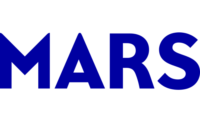As more consumers shop online, and in-store experiences are changing, retailers need to evolve their thinking around where and how confectionery is purchased.
That’s according to new insights released by Mars Wrigley Confectionery U.S.
The candy maker says consumers today are looking for a holistic shopping experience, especially as the lines between traditional retail and online shopping have blurred.
“Driving sales for retailers outside of the checkout area is a key priority for us this year,” says Shirley Ulrich, v.p. of U.S. grocery sales at Mars Wrigley Confectionery. “With this complete view of the entire grocery shopping journey, we are working with grocery partners such as Walmart, Dollar General and Fred’s to create customized recommendations tailored to drive sales across the store and online.”
And while overall in-store sales are changing, the gum and confections categories consistently contribute to shoppers putting more items in their basket. But many shoppers struggle with the candy aisle.
“Our research has confirmed that once shoppers are in the candy aisle, they think it’s disorganized, hard to shop and underwhelming,” says Tiffany Menyhart, v.p. of U.S. category leadership at Mars Wrigley Confectionery. “Mars Wrigley Confectionery utilizes our Path to Purchase strategy and Best In Class shelving to help alleviate this stress when shopping the category, to help better engage shoppers. What’s really exciting is that our Path to Purchase recommendations are forward-looking — focused on orchestrating new behaviors and opportunities in the category.”
Mars Wrigley Confectionery’s Path to Purchase approach takes into account the full shopping journey and the places and ways consumers shop. The approach outlines key areas of opportunity, inside and outside the store, to help retailers provide a seamless, integrated experience that ultimately results in more sales.
As part of its research Mars Wrigley found that:
- Shoppers rated the confectionery category nearly 100 percent more difficult to shop than other comparable categories.
- 62 percent of shoppers make their confectionery purchase decision at shelf.
- Shoppers spend nearly all of their 57 seconds in the confectionery aisle searching, instead of shopping.
- 70 percent of impulse purchases are driven by visibility or an in-moment craving.
- 41 percent of buyers’ primary reason for purchasing chocolate was that it looked delicious.
- Nearly half of Millennials (47 percent) choose a treat to boost their mood, compared with 36 percent of Gen Xers and 28 percent of Baby Boomers.
- More than one-quarter (28 percent) of Americans bought a treat because they wanted to share a picture of it on social media; 52 percent of Millennials have purchased a treat to share on social media.
- Purchases of M&M’S standup pouches are up 38 percent, they have attracted 3 million more consumers to purchase this year, and consumers are spending three percent more per trip with standup pouches.
Path to Purchase Recommendations
Mars Wrigley offered retailers three main recommendations for using this data, including:
1. Where to place confectionery products throughout in the store:
– Displays along the shopper journey: Mars Wrigley Confectionery does not view candy as only an in-aisle option, and displays throughout the store are crucial. Creative merchandising can capture shoppers’ attentions from their first steps inside the store. A few examples include:
- Secondary displays in high-traffic areas that work in tandem with the checkout lane to stimulate additional sales.
- Counter units and shippers such as a new Mixed Singles Skinny Tower that promote key moments with brands.
- Four Way Aisle Merchandising Displays, which have been proven to drive both household penetration, as well as, category buyers.
- Power wing displays that attach to a side-cap, maximizing promotional space while keeping the floor clear for retailers with “clean aisle” policies.
2. Ways to help shoppers notice and find confectionery (in-aisle and online):
– Update candy shelves and aisle: By creating a more intuitive and visually appealing shelf and aisle, searching time can be reduced and shopper satisfaction and sales will increase. A few opportunities to do this include:
- Transitioning to stand-up pouches: This has encouraged shoppers to not simply buy confectionery but also more of it.
- Apply customized shelving concepts: Path to Purchase insights elevated the category experience at Dollar General through In-Aisle sets that have resulted in positive sales results for the retailer and the category.
- Additionally, in partnership with Fred’s, Mars Wrigley Confectionery is also testing “Good, Better, Best” shelving concepts with varying styles and investment levels to potentially drive nationwide execution.
- At Kroger, Mars Wrigley is testing visual cues and distinct merchandising to create a distinctive experience for each mindset segment which resulted in an immersive experience for the shopper.
- At Jewel, Mars Wrigley Confectionery is testing BIC flow through our Shelving Guidelines to define the segment flow and continuum of adjacencies.
– Online Click-to-Cart and Micro-Gifting: Mars Wrigley Confectionery is also exploring new, unique ways to shorten the digital path-to-purchase and drive sales for retailers online and in-stores. A few examples include:
- Enhanced click-to-cart functionality can be built into posts featuring anything from recipes, crafts or gifts. A recent Super Bowl promotion generated 20,000+ potential new orders for testing partner Walmart.
- Micro-gifting leverages person-to-person mobile gifting through digital gift cards and drives consumers to retailers (either in-store or online) with fun, unique ways to give confectionery gifts. Through a Halloween activation with Walmart, Mars Wrigley Confectionery helped customers “boo” their friends by secretly sending bags of Halloween treats on each other’s doorsteps. The activation included online and in-store purchase options, allowing customers to shop, ship and secretly gift “boo” packages and build their own “boo” bundles.”
3. Treating candy as a treat, not a snack:
Mars Wrigley Confectionery knows through its research that consumers view candy as a treat and continue to enjoy it as part of a balanced lifestyle, especially Millennials. In response, it’s important retailers provide consumers with a range of formats, calories and price options to drive sales. A few examples include:
- More options for share sizes and resealable packaging.
- 100-calorie bars and packs, such as those available for Skittles, Dove, Twix and Snickers.
- Low calories gum choices such as Extra, Juicy Fruit and 5 gum.
Background on the insights
Mars Wrigley Confectionery’s Path to Purchase recommendations were developed after a multi-month global research journey to understand the truths of today’s end-to-end confectionery shopping experience.
Qualitative, human stories were married with a deep quantitative understanding across all channels and candy segments. 7,500 category shoppers were engaged across the shopping journey at more than 30 retailers.
Additionally, Mars Wrigley Confectionery surveyed 1,000 Americans last year to understand how Millennials and Baby Boomers experience treats as well as the role of social media in treating.
Mars Wrigley Confectionery has begun working with retailers to put these recommendations into action. The company has created a framework that unlocks the power of confectionery at the point of purchase — online and in-stores.





